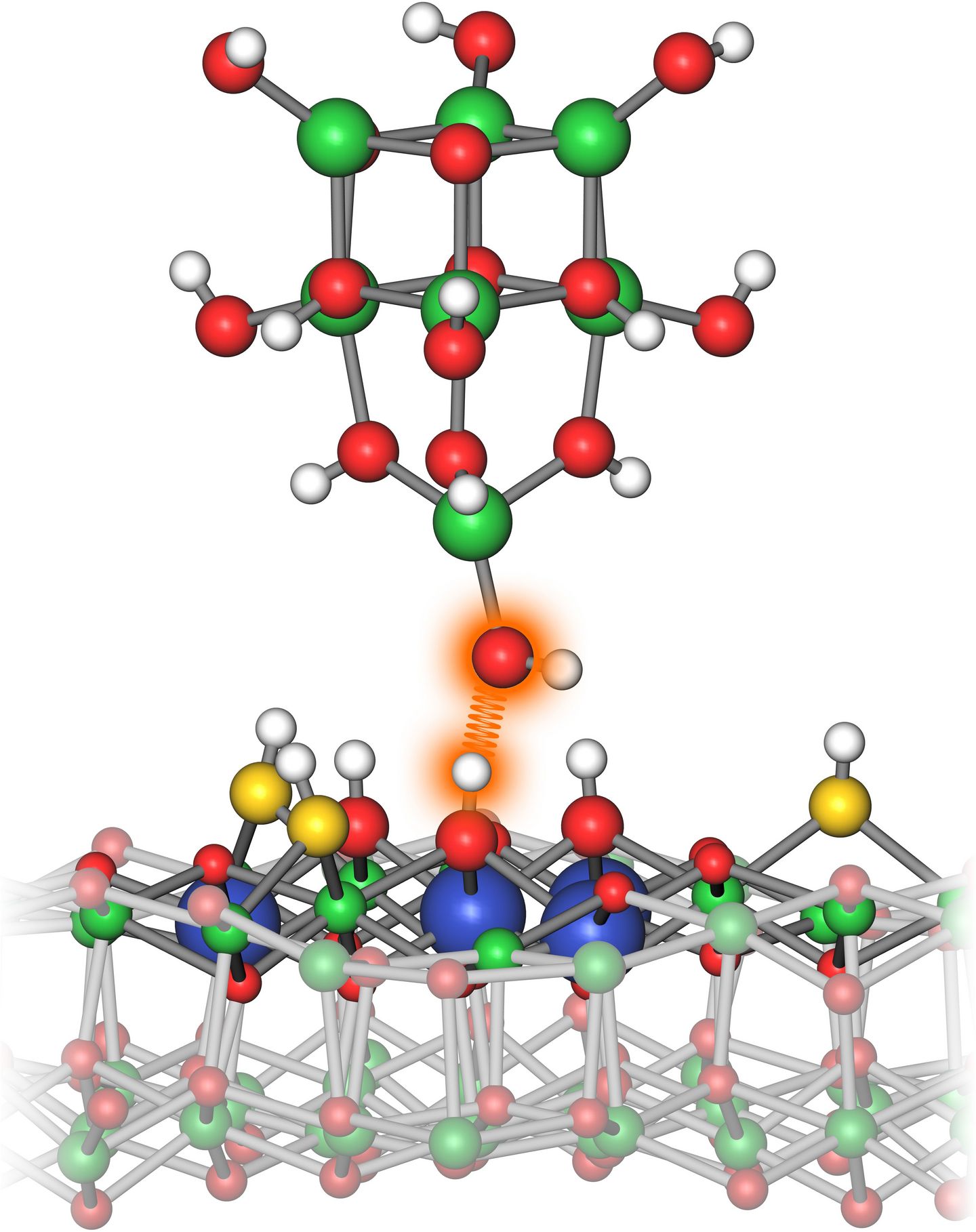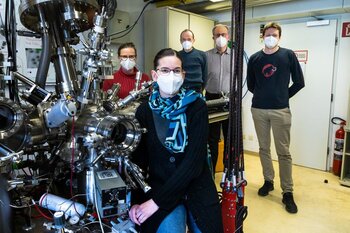The Acidity of Individual Atoms - Breakthrough at TU Wien
Researchers at the Institute of Applied Physics at TU Wien can now determine the proton affinity of different surface sites of indium oxide with atomic precision. This Nature paper is an important step forward for understanding a surfaces’ chemistry, as previously acidity could only be estimated by semi-empirical concepts, such as bond-order valence sums.

In this paper researchers probed the strength of the hydrogen bonds at the surface sites of indium oxide with the tip of a non-contact atomic force microscope and found quantitative agreement with density functional theory calculations. By relating the results to known proton affinities of gas-phase molecules, they determined the proton affinity of the different surface sites of indium oxide with atomic precision.
This important step forward relies on recent developments in high-resolution non-contact atomic force microscopy (nc-AFM) using the qPlus sensor. The experiments were carried out in two different ultrahigh vacuum chambers from Scienta Omicron that have a similar design, each one based on a two-vessel system with base pressures of <2 × 10−10 mbar and <2 × 10−11 mbar in the preparation and analysis chambers, respectively.
“This is a fantastic achievement. The mission of Scienta Omicron is to provide Nobel Prize technologies to science and industry, and to spread these through affordability. As in this case, we become even more motivated to continue our development and support efforts, when we see what our customers can accomplish,” says Johan Åman, President.
Read the full Nature paper here: https://doi.org/10.1038/s41586-021-03432-3
Read the news article from TU Wien here: https://www.tuwien.at/en/tu-wien/news/news-articles/news/wie-sauer-sind-atome
Paper Title: Direct assessment of the acidity of individual surface hydroxyls
Authors: Margareta Wagner, Bernd Meyer, Martin Setvin, Michael Schmid & Ulrike Diebold

